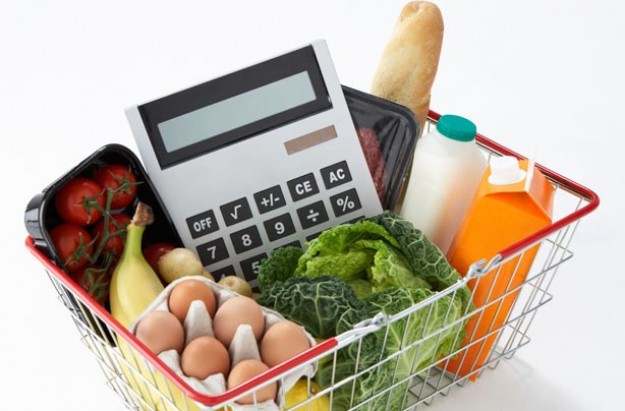Healthy Doesn’t Have to Cost More

Written by Sarah Mammarella, MS, RD, LDN, Family & Consumer Sciences Agent in Richmond County, NC
As a Registered Dietitian and a community educator people often tell me they believe it costs more to eat healthy. But does it? In order to answer this question we must first attempt to understand what “healthy” means. Currently there is no specific and direct definition of “healthy”. However, we do know that eating foods that are low-sodium, low-sugar and low fat are better for us than their full-sodium, full-sugar and full-fat counterparts. In addition, research shows that eating whole grains, lean proteins, low-fat dairy and fruits and vegetables decrease our risk for many chronic diseases (i.e. diabetes, heart disease etc.). So, do these foods described cost more than their less healthy counterparts? The simple answer is not always. Research has shown that many foods that meet the above criteria, for example, skim milk, low sodium soup, sugar free canned fruit, etc. can be purchased without spending more money . However, there are other “healthier” foods that consumers must spend more to purchase. These include, lean ground beef, whole-wheat products and some low fat dairy etc.).
Although some “healthier” foods do cost more to purchase, there are some key tips that educators can share with the community to help consumers keep more money in their pockets.
1. Plan!
As educators we should urge all consumers to plan their meals for the week. Planning not only gives a guide to what we are going to eat, but it also decreases the likelihood that we will have to grab something from the nearest fast food or quick service restaurant. Planning foods to purchase from the grocery store also helps to keep us out of the “junk” food aisles and makes our grocery trip more effective and time efficient.
2. Get the most bang for your buck!
I always urge consumers to plan their meals according to what is on sale at their local grocery store that week. When we plan our meals around sales it is easier to look for the absolute best price in every food item that we purchase. We can also try to match up as many coupons as possible to the sales – which will help us get a better price. Coupons can be found on the Internet, in the newspaper and at the grocery store itself.. Some stores even double or triple coupons up to a certain amount – inform your community about this and have them check their store’s coupon policies. And do not forget about store loyalty cards. The cards are available at no cost to the consumer and offer real savings at the register on various food and non-food items that are on “special.” Loyalty cards offer savings on everything from fresh fruit and vegetables to cereals to meats.
3. Compare and contrast prices!
By observing the unit price, usually found on the shelf pricing tag below a specific food item, we can help the consumer become better informed. Basically, a unit price tells an item’s price per unit weight (i.e. price per pound etc.). By comparing unit prices people are better able to compare prices between different name brands as well as prices between different sizes of the same brand.
4. Buy in bulk!
Most of us know that we can normally buy food in bulk for cheaper than regularly sized food items. Buying bulk meats can especially help consumers to save money-as long as they know how to safely freeze these items in smaller packages. There are exceptions to this rule, which is when understanding unit pricing come in handy.
5. Buy Produce that is in season!
Buying fresh produce in season almost always decreases cost. This is a good way to increase fruit and vegetable consumption without also increasing cost. Although, frozen and canned fruits and vegetables are also good options. Other produce that is generally cheap all year round includes onions, potatoes, bananas, apples, carrots, celery and cabbage.
Not sure when your favorite fruits and vegetables are in season? You can use this “What’s in Season” chart to find out.
6. Make your own meals!
Many times when we try to cut time and effort by purchasing prepackaged meals, like frozen dinners, we spend more money. If we make our meals from scratch (or at least partially from scratch) we save a lot of money. Furthermore, foods made from scratch are often lower in sodium and fat!
7. Waste not!
As Americans, we often seem to waste food. But, wasting food wastes money. I encourage people I speak with to only buy foods that they know they will eat and not have to throw out. I also encourage people to always eat leftovers. Many people don’t like leftovers, but encourage them to be creative with using their leftovers. Leftovers can often be made in to different meals – for example, use left over chicken for a stir-fry or chicken salad, or use left over vegetables for a big pot of vegetable soup!
Eating healthy doesn’t have to cost more.
Originally posted on the Dollar Decisions blog on April 12, 2013.